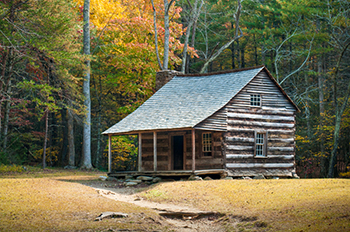Homesteading has a rich history in the United States. Initially used to populate and explore the wild frontiers, the concept has evolved over recent decades. Below, we explain what homesteading is and how you can start practicing it. While you may not apply every aspect of homesteading, many of its principles can help make you and your family more self-reliant and self-sufficient.
What is Homesteading?
Homesteading is a lifestyle of self-sufficiency that typically involves subsistence agriculture, food preservation, creating your own clothing and textiles, and maintaining your home and property. The concept of homesteading dates back to philosophers like John Locke, who wrote about the homesteading principle:
“Though the earth and all inferior creatures be common to all men, yet every man has a property in his own person. This[,] nobody has any right to but himself. The labour of his body and the work of his hands, we may say, are properly his. Whatsoever, then, he removes out of the state that Nature hath provided and left it in, he hath mixed his labour with it, and joined to it something that is his own, and thereby makes it his property.” - John Locke
In simpler terms, if a farmer worked unowned land to grow crops, they owned that food and could sell it. This idea shaped many capitalist principles that form the basis of our society.  You may also remember learning about the Homestead Act of 1862 in history class. This act allowed Americans to claim land, cultivate it, and become independent. The back-to-the-earth movement of the 1960s revived these ideals, applying them to urban and suburban settings—commonly referred to as urban homesteading. Today, many are drawn to homesteading as a way to become less dependent on the economy and more independent.
You may also remember learning about the Homestead Act of 1862 in history class. This act allowed Americans to claim land, cultivate it, and become independent. The back-to-the-earth movement of the 1960s revived these ideals, applying them to urban and suburban settings—commonly referred to as urban homesteading. Today, many are drawn to homesteading as a way to become less dependent on the economy and more independent.
How to Begin Homesteading
Gather Supplies. Homesteading is about self-sufficiency, meaning you should have all the tools, home-space, and materials you need. You don’t have to stock up on everything for a lifetime, but being prepared for bartering or trading is essential. Many items will become self-sustaining and can be sold later.
Plant a Garden. Gardening is one of the best examples of self-sufficient income. By following permaculture principles, you can plant once and harvest for years. Ensure you have enough land and space to store your harvest.
Have Food Storage. A key aspect of homesteading is ensuring food availability when needed. This could involve canning garden-grown produce or using freeze-dried foods with a shelf life of up to 30 years.
Reuse Items. One of the easiest ways to be self-sufficient is to reuse materials. For instance, old clothes can be made into blankets, or baking soda can have multiple uses beyond cooking. Check out our DIY section for more ideas to save money.
Raise Animals. Many homesteaders raise animals like chickens or rabbits to provide food. Chickens can provide eggs, while rabbits and other animals offer meat. Some even keep animals like llamas or sheep for their wool, which can be used to make various items.
Use Alternative Energy. Homesteading often involves “living off the grid,” using alternative energy like solar panels and generators to power homes. This way, if there’s a power outage, you’re already prepared.
Where to Homestead
Homesteading used to be about finding isolated locations far from cities, but today it’s more about being self-reliant. You can homestead almost anywhere, although more land is necessary if you plan to raise animals or grow a large garden. While the government no longer sponsors homesteading initiatives, many people are setting up homesteads in remote areas of Alaska and the Midwest.
Stay tuned for more articles on how to enhance your homesteading efforts, including using alternative energy, multiple uses for common items, food storage, raising animals, and more! What topics would you like to learn about first? Comment below with your thoughts and experiences. If you’re already homesteading, share your stories and challenges with us!











